Month: September 2019
Sunday Poem
Dishwater
Slap of the screen door, flat knock
of my grandmother’s boxy black shoes
on the wooden stoop, the hush and sweep
of her knob-kneed, cotton-aproned stride
out to the edge and then, toed in
with a furious twist and heave,
a bridge that leaps from her hot red hands
and hangs there shining for fifty years
over the mystified chickens,
over the swaying nettles, the ragweed,
the clay slope down to the creek,
over the redwing blackbirds in the tops
of the willows, a glorious rainbow
with an empty dishpan swinging at one end.
by Ted Kooser
from Delights and Shadows|
Copper Canyon Press, 2004
The Soviet Union and the Birth of Human Rights
 Eric D. Weitz in the LA Review of Books:
Eric D. Weitz in the LA Review of Books:
THE MODERN HUMAN RIGHTS SYSTEM, an assemblage of international treaties, state laws, and thousands of NGOs, is the work, to a very significant degree, of the Soviet Union. This simple contention is likely to inspire screams of outrage. How can we talk about human rights in a country that, under Josef Stalin, killed, tortured, and deported millions of its own citizens? Even under Stalin’s successors, the Soviet state remained deeply repressive and imprisoned and confined to psychiatric hospitals thousands of people who spoke out for freedom of speech and assembly and other basic rights.
Yet from a variety of angles, the Soviet Union contributed many panes in the construction of the fragile, glass house of human rights. Whatever its practices at home, at the international level after 1945 the Soviet Union promoted a robust conception of human rights that included national self-determination and economic and social rights. Its moves beyond the narrow, classically liberal conception of political rights inspired great hostility from the United States and many other liberal states that are usually considered the singular creators of human rights — and won the Soviets support in the Global South. Together, the Soviet bloc–Global South alliance largely defined the meaning of international human rights from the 1960s onward.
More here.
Is Meritocracy to Blame for Our Yawning Class Divide?
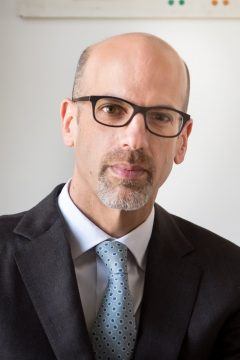 Thomas Frank in the NYT:
Thomas Frank in the NYT:
For affluent, white-collar Americans, higher learning is something close to sacred. We bask in the sunshine of enlightenment that prestige universities radiate and we speak of them in the language of dreams, of religious veneration. They are the foe of much that is evil and the source of a lot that is good. More and better education, we like to believe, will solve climate denialism, overcome bigotry and even mitigate our grotesque income inequality.
But now comes Daniel Markovits, a professor at Yale Law School, to tell us that far from solving economic inequality, higher education is one of the central forces driving our yawning class divide. In this ambitious and disturbing survey of the American upper class, he tells us that our elite universities’ sifting and sorting of human beings has helped to herd Americans into a system of rank and status and — yes — caste that is now so clearly passed from parent to child that its most privileged beneficiaries might as well be called an “aristocracy.” Indirectly and along the way, the hierarchy thus constructed has drained the promise from middle-class life and sparked a backlash from the vast presumed unexcellent whom our cult of white-collar achievement has left behind.
More here.
The polling industry doesn’t measure public opinion – it produces it
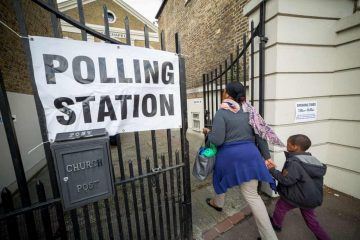 Richard Seymour in The Guardian:
Richard Seymour in The Guardian:
The methodology of polling implies that there exists a general will on any given issue – the sum of a quantity of individual opinions of roughly equal weight. These can be totalled up into a magic percentage. But one reason voting intention polls must weight their results is that not all opinions are equally informed, committed or even meaningful. Most of us have ambivalent or downright contradictory views on some subjects, which is why small adjustments in polling questions can produce such varying results.
So while polling, in conditions of political stability, can often accurately predict voting outcomes, its findings are less meaningful as a guide to “public opinion” on more complex issues. “Nothing is more inadequate,” wrote the sociologist Pierre Bourdieu, “for representing the state of opinion than a percentage.” “Public opinion” is a mirage.
More here.
New official video for The Beatles’ “Here Comes the Sun” for 50th Anniversary of their Abbey Road album
The Enigma of Clarence Thomas
Lidija Haas at Bookforum:
 TAKE A MINUTE NOW to write down the first associations that come to your mind regarding Clarence Thomas. You might note that he represents the extreme right wing of the Supreme Court and that, beginning his twenty-ninth term this fall, he is its longest-serving justice, not to mention Donald Trump’s personal favorite. No doubt you’ll think of his alleged sexual harassment of Anita Hill during his tenure at the Department of Education and when he was head of the Equal Employment Opportunity Commission under Ronald Reagan, of the ordeal she went through when forced to testify about it during his 1991 confirmation hearings, to no avail, and of his own infamous characterization of those hearings as a “high-tech lynching.” Perhaps his conspicuous quiet will come to mind, his refusal to say anything during oral arguments for years at a time—the New York Times reported somewhat breathlessly in 2016 that Thomas had just resumed speaking from the bench after keeping shtum for an entire decade. You may also recall the flurry of news coverage that ensued recently when, not content simply to go along with the majority opinion in Box v. Planned Parenthood of Indiana and Kentucky, which upheld Indiana’s right to require that aborted fetuses receive funerary rites, he added a long and fervent concurring opinion that connected abortion rights to eugenics and the US’s ugly history of forced sterilization. I’m guessing, though, that you probably wouldn’t start by describing Thomas as, in Corey Robin’s words, “a conservative black nationalist on the Supreme Court.”
TAKE A MINUTE NOW to write down the first associations that come to your mind regarding Clarence Thomas. You might note that he represents the extreme right wing of the Supreme Court and that, beginning his twenty-ninth term this fall, he is its longest-serving justice, not to mention Donald Trump’s personal favorite. No doubt you’ll think of his alleged sexual harassment of Anita Hill during his tenure at the Department of Education and when he was head of the Equal Employment Opportunity Commission under Ronald Reagan, of the ordeal she went through when forced to testify about it during his 1991 confirmation hearings, to no avail, and of his own infamous characterization of those hearings as a “high-tech lynching.” Perhaps his conspicuous quiet will come to mind, his refusal to say anything during oral arguments for years at a time—the New York Times reported somewhat breathlessly in 2016 that Thomas had just resumed speaking from the bench after keeping shtum for an entire decade. You may also recall the flurry of news coverage that ensued recently when, not content simply to go along with the majority opinion in Box v. Planned Parenthood of Indiana and Kentucky, which upheld Indiana’s right to require that aborted fetuses receive funerary rites, he added a long and fervent concurring opinion that connected abortion rights to eugenics and the US’s ugly history of forced sterilization. I’m guessing, though, that you probably wouldn’t start by describing Thomas as, in Corey Robin’s words, “a conservative black nationalist on the Supreme Court.”
more here.
The Relentless Rise of the East India Company
Jason Burke at The Guardian:
 On 28 August 1608, Captain William Hawkins, a bluff British sailor, dropped anchor off Surat, a port on the western coast of the Indian subcontinent. India then had a population of around 150 million, around a fifth of the world’s total.
On 28 August 1608, Captain William Hawkins, a bluff British sailor, dropped anchor off Surat, a port on the western coast of the Indian subcontinent. India then had a population of around 150 million, around a fifth of the world’s total.
Many were ruled by the Mughal empire, a regional superpower that had seized Delhi and much of the north of India two centuries earlier. When Hawkins arrived, this immensely impressive dynasty had 4 million men under arms. When slighted by Portuguese merchant adventurers who built unauthorised fortifications around trading posts at the mouth of the Ganges, the emperor swept the Europeans into the river with embarrassing ease. Mughal capitals were busy with traders, artists, poets, aristocrats, warriors and clerics, all of whom contributed to the flow of around £100m annually, equivalent to roughly £10bn today, to the imperial exchequer in the northern city.
more here.
Ta-Nehisi Coates Makes His Fiction Debut
Dwight Garner at the NYT:
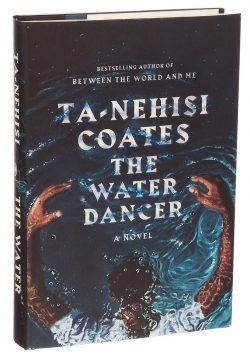 Coates doesn’t linger on the gruesome realities of slavery. There are no extended scenes of abuse. His novel increasingly begins to bend toward the motifs and impulses of the comic book and superhero world. “A power was within me,” Hiram says, “but with no thought of how to access it or control it, I was lost.” He seeks a mentor. She is called Moses. Others know her by the name Harriet Tubman, who in this novel is not merely the abolitionist who made daring missions to rescue enslaved people but a woman known to some as “the living master of Conduction.”
Coates doesn’t linger on the gruesome realities of slavery. There are no extended scenes of abuse. His novel increasingly begins to bend toward the motifs and impulses of the comic book and superhero world. “A power was within me,” Hiram says, “but with no thought of how to access it or control it, I was lost.” He seeks a mentor. She is called Moses. Others know her by the name Harriet Tubman, who in this novel is not merely the abolitionist who made daring missions to rescue enslaved people but a woman known to some as “the living master of Conduction.”
Hiram and Tubman go for a walk in Philadelphia. Tubman begins to glow a “pale spectral green” and together they hover above the Delaware River. Tubman teaches him that a great ability is within him, that “memory is the chariot, and memory is the way, and memory is bridge from the curse of slavery to the boon of freedom.”
more here.
How a Voyage to French Polynesia Set Herman Melville on the Course to Write ‘Moby-Dick’
William Vollmann in Smithsonian:
 This is the tale of a man who fled from desperate confinement, whirled into Polynesian dreamlands on a plank, sailed back to “civilization,” and then, his genius predictably unremunerated, had to tour the universe in a little room. His biographer calls him “an unfortunate fellow who had come to maturity penniless and poorly educated.” Unfortunate was likewise how he ended. Who could have predicted the greatness that lay before Herman Melville? In 1841, the earnest young man sneaked out on his unpaid landlady and signed on with the New Bedford whaler Acushnet, bound for the South Seas. He was 21, eager and shockingly open-minded, yearning not just to see but to live. In Typee (1846) and Omoo (1847) and the other seafaring novels inspired by his exploits over the next three years, written in the half-decade before he commenced Moby-Dick, his word-voyage aboard the Pequod, Melville wrote with bighearted curiosity about fearsome “savages” and cultural otherness. To honor this prophet of empathy, this spring I set out for French Polynesia, to see some of the watery part of the world, and to view what I could of the place and its inhabitants, which formed in our novelist his moral conscience and gave unending sail to his language and his metaphors. Back in America, he had to learn to savor these gifts, for after tasting briefly of success he would not have much else to sustain him.
This is the tale of a man who fled from desperate confinement, whirled into Polynesian dreamlands on a plank, sailed back to “civilization,” and then, his genius predictably unremunerated, had to tour the universe in a little room. His biographer calls him “an unfortunate fellow who had come to maturity penniless and poorly educated.” Unfortunate was likewise how he ended. Who could have predicted the greatness that lay before Herman Melville? In 1841, the earnest young man sneaked out on his unpaid landlady and signed on with the New Bedford whaler Acushnet, bound for the South Seas. He was 21, eager and shockingly open-minded, yearning not just to see but to live. In Typee (1846) and Omoo (1847) and the other seafaring novels inspired by his exploits over the next three years, written in the half-decade before he commenced Moby-Dick, his word-voyage aboard the Pequod, Melville wrote with bighearted curiosity about fearsome “savages” and cultural otherness. To honor this prophet of empathy, this spring I set out for French Polynesia, to see some of the watery part of the world, and to view what I could of the place and its inhabitants, which formed in our novelist his moral conscience and gave unending sail to his language and his metaphors. Back in America, he had to learn to savor these gifts, for after tasting briefly of success he would not have much else to sustain him.
Herman Melville was born 200 years age, on August 1, 1819. Both of his grandfathers were celebrities of the Revolutionary War. His mother’s father, Peter Gansevoort, had defended Fort Schuyler against the Redcoats. His father’s father, Thomas Melvill (no “e”), one of Samuel Adams’ co-conspirators, took part in that infamous hooliganism called the Boston Tea Party. After victory they both came into money. Unfortunately for Herman Melville, his father, Allan, borrowed heavily from many quarters, including his wife’s not yet allotted inheritance, concealing debts, skipping out on creditors.
Allan died in 1832. Now Herman, age 12, had to leave school to toil at the New York State Bank, of which his unforgiving benefactor Uncle Peter was one of the directors. From this torture the boy was pulled out to labor at his elder brother Gansevoort’s furrier establishment, which presently failed. We glimpse him back in school, then out again: a would-be canal surveyor, and probably a hired laborer. “Sad disappointments in several plans which I had sketched for my future life,” runs the opening page of his fourth novel, Redburn (1849), a crowd-pleaser about a naif on his first voyage among rough sailors, ringing highly autobiographical. “The necessity of doing something for myself, united to a naturally roving disposition, had now conspired within me, to send me to sea as a sailor.”
More here.
Do Men and Women Have Different Brains?
Emily Oster in The New York Times:
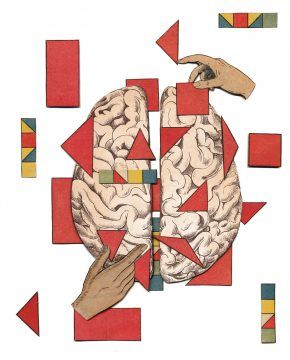 Piano players’ brains look different from those of violin players. Researchers have shown changes in brain activity in response to a short-term intervention in which girls played Tetris regularly — their visual-spatial brain areas seemed to enlarge. Such evidence of brain plasticity is key to Gina Rippon’s new book, “Gender and Our Brains” (which, yes, does relate the story of Phineas Gage, as well as that of the dead fish). The book is, at the core, concerned with the question of whether male and female brains are different. Rippon, a British professor of cognitive neuroimaging, reviews the history of studies of the gendered brain. The most persistent feature of these studies is the focus on size. Men have bigger brains on average, going along with their generally larger bodies, a fact that has come up again and again as an argument for male superiority, or at least structural difference. Size has fallen out of fashion, but the desire to identify gender-specific parts of the brain has not.
Piano players’ brains look different from those of violin players. Researchers have shown changes in brain activity in response to a short-term intervention in which girls played Tetris regularly — their visual-spatial brain areas seemed to enlarge. Such evidence of brain plasticity is key to Gina Rippon’s new book, “Gender and Our Brains” (which, yes, does relate the story of Phineas Gage, as well as that of the dead fish). The book is, at the core, concerned with the question of whether male and female brains are different. Rippon, a British professor of cognitive neuroimaging, reviews the history of studies of the gendered brain. The most persistent feature of these studies is the focus on size. Men have bigger brains on average, going along with their generally larger bodies, a fact that has come up again and again as an argument for male superiority, or at least structural difference. Size has fallen out of fashion, but the desire to identify gender-specific parts of the brain has not.
Rippon’s key thesis, however, is that once we recognize the existence of brain plasticity, this entire enterprise seems nonsensical. In her telling, girls and boys are treated differently from birth — even, possibly, from conception, as she relates the potential impact (far-fetched though it seems to me) of gender-reveal parties on fetal brain development. And this differential treatment will lead their brains to develop differently. If you put your boy baby in a truck onesie and your girl baby in a princess onesie, you’re already having an impact. Given this argument, virtually any evidence we might have about differences between male and female brains is suspect. The answer may well be yes, brains appear systematically different across genders — but you’ll never know if this reflects some underlying structural difference, or whether it’s simply the result of different treatment.
More here.
Saturday Poem
Late Spring
The kingdom of perception is pure emptiness
…………………………………..……….—Po Chu-i
I have faltered in my appointed duty.
It is a small sacrilege, a minor heresy.
The nature of the duty is close attention
to the ivy and its tracery on riled brick,
the buckled sidewalk, the optimistic fern,
downed lilacs brown as coffee grounds,
little twirled seedwings falling by the thousands
from the maples in may wind,
and the leaves themselves
daily greener in ripening sunlight.
To whom is their offering rendered,
and from whom derived,
these fallen things
urging their bodies upon the pavement?
There is a true name for them,
a proper term, but what is it?
.
by Campbell McGrath
from The Poetry Foundation
Why more democracy isn’t better democracy
Robert B. Talisse in the Oxford University Press Blog:
 Democracy, like fitness, has a point. No matter what one might believe about democracy’s intrinsic value, what makes it such an important social good is that it enables goods of other kinds to flourish. When these other goods are crowded out of our collective lives, democracy becomes pathological.
Democracy, like fitness, has a point. No matter what one might believe about democracy’s intrinsic value, what makes it such an important social good is that it enables goods of other kinds to flourish. When these other goods are crowded out of our collective lives, democracy becomes pathological.
Consider that democracy is not only a form of constitutional representative government; it is more fundamentally a system of collective self-government among social equals. When equals govern themselves, you can count on persistent, and often severe, disagreement about politics. As these disagreements are commonly high-stakes, there is an ethos that democratic citizens must embody. This enables citizens to sustain their respect for each other’s equality amidst ongoing political disputes. As citizens lose the capacity to respect each other’s equality, democracy devolves into a cold civil war by which factions seek simply to rule.
When there’s too much democracy, the travails of current politics penetrate the whole of social life. Well-documented trends suggest that in the United States and elsewhere, rival partisans do not merely divide over politics; they also live in different neighborhoods, shop at different stores, drive different vehicles, follow different sports, consume different entertainment, worship at different churches, and do different kinds of jobs. Consider: Walmart or Target? Hybrid or pickup? Camo tee or yoga pants? Starbucks or Dunkin’? NASCAR or NBA? This partisan clustering of social life means that our everyday encounters are increasingly likely to place us in contact only with others who are politically much like ourselves.
More here.
Mathematics as a Cultural Force
Jessica Gross in Longreads:
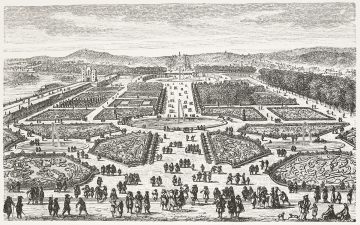
In his new book, Proof!: How the World Became Geometrical, historian Amir Alexander advances an audacious claim: that Euclidean geometry profoundly influenced not just the history of mathematics, but also broader sociopolitical reality. In prose that makes his passion for the material both clear and catching, he describes how Euclid’s Elements present a vision of a perfectly rational order, but one that was viewed as purely theoretical: There was no place for geometrical ideals in messy reality. In the 1400s, Leon Battista Alberti, an Italian polymath, upended that understanding, countering that the world was, in fact, fundamentally geometrical. Other thinkers, from Copernicus to Galileo, followed. And, as Alexander argues, this sea change had profound implications: If the world was geometrical—not only rational, but also hierarchical and permanent—then that was the divinely ordained social order, too. Euclidean geometry, that is, was used to justify monarchy.
More here.
Farewell to György Konrád
Gábor Csordás at Eurozine:
 A Hungarian writer, known worldwide; a political thinker who greatly influenced the intellectual life of the last fin de siècle; the third member of the great Central European triad, together with Milan Kundera and Danilo Kiš; one of the intellectual leaders of the democratic transformation of Hungary. György Konrád is gone.
A Hungarian writer, known worldwide; a political thinker who greatly influenced the intellectual life of the last fin de siècle; the third member of the great Central European triad, together with Milan Kundera and Danilo Kiš; one of the intellectual leaders of the democratic transformation of Hungary. György Konrád is gone.
He was born near the eastern border of Hungary, in Berettyóújfalu, into a relatively well-to-do Jewish family. At the age of 11, after the arrest of his parents by the Gestapo, he left for Budapest with his older sister and two of their cousins. The next day, the deportation of Jews from the countryside began. They were sent to Auschwitz, from where none of his Jewish schoolmates ever returned. Favoured by fortune, all of his family members met after the war. His parents, who had been deported to Austria, survived too.
more here.
Reimagining the Mushroom
Anna Journey at The Believer:
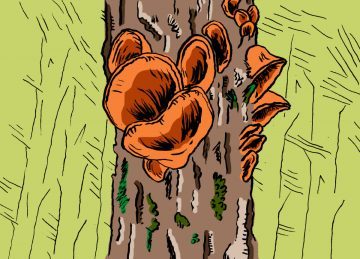 “[F]ungi are the grand recyclers of our planet,” writes mycologist Paul Stamets in Mycelium Running, “the mycomagicians disassembling large organic molecules into simpler forms, which in turn nourish other members of the ecological community.” Certain fungi, known as saprophytes (from the Greek sapro: “rotten” and phytes: “plants”), feed upon decaying or dead organic matter. These industrious mushrooms—portobello, cremini, oyster, reishi, enoki, royal trumpets, shiitake, white button—speed up decomposition, restore and aerate soil, and provide food for other life forms, from bacteria to bears. “The yeasts and molds used in making beer, wine, cheese, and bread are all saprophytes,” notes journalist and food writer Eugenia Bone in Mycophilia. So rot-eating fungi helped civilize us, Bone notes, “if you consider good wine an indicator of civilization.”
“[F]ungi are the grand recyclers of our planet,” writes mycologist Paul Stamets in Mycelium Running, “the mycomagicians disassembling large organic molecules into simpler forms, which in turn nourish other members of the ecological community.” Certain fungi, known as saprophytes (from the Greek sapro: “rotten” and phytes: “plants”), feed upon decaying or dead organic matter. These industrious mushrooms—portobello, cremini, oyster, reishi, enoki, royal trumpets, shiitake, white button—speed up decomposition, restore and aerate soil, and provide food for other life forms, from bacteria to bears. “The yeasts and molds used in making beer, wine, cheese, and bread are all saprophytes,” notes journalist and food writer Eugenia Bone in Mycophilia. So rot-eating fungi helped civilize us, Bone notes, “if you consider good wine an indicator of civilization.”
“Fungi,” Stamets adds, “are the interface organisms between life and death.” During the cycle of rot and renewal, saprophytes degrade toxins, including a number of industrial chemicals and heavy metals we absorb through our skin and carry in our bloodstreams throughout our lives.
more here.
The Complicated Life of Susan Sontag
Elaine Showalter at the TLS:
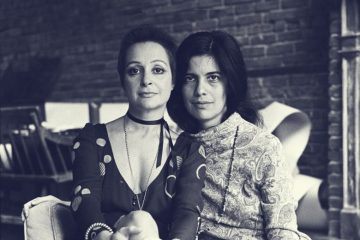 Among the memorable stories in Benjamin Moser’s engrossing, unsettling biography of Susan Sontag, an observation by the writer Jamaica Kincaid stands out indelibly. In 1982, Sontag’s beloved thirty-year-old son David Rieff endured a number of major crises: cocaine addiction, job loss, romantic break-up, cancer scare and nervous breakdown. At that point, Moser writes, Sontag “scampered off to Italy” with her new lover, the dancer and choreographer Lucinda Childs. “We couldn’t really believe she was getting on the plane”, Kincaid told Moser. She and her husband Allen Shawn took David into their home for six months to recover. Later she searched for words to characterize Sontag’s behaviour: “Yes, she was cruel, and so on, but she was also very kind. She was just a great person. I don’t think I ever wanted to be a great person after I met Susan”.
Among the memorable stories in Benjamin Moser’s engrossing, unsettling biography of Susan Sontag, an observation by the writer Jamaica Kincaid stands out indelibly. In 1982, Sontag’s beloved thirty-year-old son David Rieff endured a number of major crises: cocaine addiction, job loss, romantic break-up, cancer scare and nervous breakdown. At that point, Moser writes, Sontag “scampered off to Italy” with her new lover, the dancer and choreographer Lucinda Childs. “We couldn’t really believe she was getting on the plane”, Kincaid told Moser. She and her husband Allen Shawn took David into their home for six months to recover. Later she searched for words to characterize Sontag’s behaviour: “Yes, she was cruel, and so on, but she was also very kind. She was just a great person. I don’t think I ever wanted to be a great person after I met Susan”.
In 2013, when Moser signed up to write Sontag’s authorized biography, he took on a hazardous task: how to recount the eventful life, influential ideas and significant achievements of a legendary public intellectual, and assess the overall legacy of an outrageous, infuriating great person?
more here.
On the documentaries of Anand Patwardhan
William Harris in n + 1:
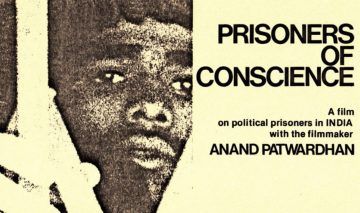 Nothing has better testified to the streak of illiberalism still coursing through Indian political life in the years since the Emergency than the documentaries of Anand Patwardhan. His target has shifted: from Gandhi’s supposedly liberal Congress Party to the rise of right-wing Hindu nationalism, now manifested by a BJP government whose prime minister, Narendra Modi, has turned Kashmir into a prison state and begun a mass expulsion of Muslims in Assam. But the form and political sensibility of Patwardhan’s work has remained: an engaged documentarian moving in contraflow to the ideas of the day.
Nothing has better testified to the streak of illiberalism still coursing through Indian political life in the years since the Emergency than the documentaries of Anand Patwardhan. His target has shifted: from Gandhi’s supposedly liberal Congress Party to the rise of right-wing Hindu nationalism, now manifested by a BJP government whose prime minister, Narendra Modi, has turned Kashmir into a prison state and begun a mass expulsion of Muslims in Assam. But the form and political sensibility of Patwardhan’s work has remained: an engaged documentarian moving in contraflow to the ideas of the day.
One story of documentary’s last half-century goes something like this: a once-politicized left-liberal form, associated with social reform and a positivist claim on the truth, faltered in the 1970s under a withering set of critiques. In the US, documentary’s most compelling antagonists were the artists and theorists Martha Rosler and Allan Sekula, memorable for their attacks—lambasting documentary’s penchant for reduction and cliché, its ploy of objectivity, its patronizing passion for social uplift, the way its high-mindedness hid the exploitation of its subjects—but also for their insistence that the ultimate point of critique was documentary’s reinvention, replacing its positivist claim on truth with a Marxist understanding of truth as partisan, as emerging from a particular social position and worldview.
More here.
Do Animals have Consciousness, Emotions and a sense of Fairness? An Interview with Frans De Waal
Two Linguists Use Their Skills to Inspect 21,739 Trump Tweets
Gary Stix in Scientific American:
 In recent years, Jack Grieve of the department of English and linguistics at the University of Birmingham in England has embraced Twitter as a bountiful lode for looking at language-use patterns. One of his projects examined the regional popularity of profanity in the U.S. (“crap” is big in the center of the country; “f—” turns up more on the coasts). Another study he conducted looked for new word usages spreading on American social media (“baeless” for single, for example, and “senpai” for elder or expert).
In recent years, Jack Grieve of the department of English and linguistics at the University of Birmingham in England has embraced Twitter as a bountiful lode for looking at language-use patterns. One of his projects examined the regional popularity of profanity in the U.S. (“crap” is big in the center of the country; “f—” turns up more on the coasts). Another study he conducted looked for new word usages spreading on American social media (“baeless” for single, for example, and “senpai” for elder or expert).
Now Grieve and his linguist colleague Isobelle Clarke have turned their analytic expertise to President Donald Trump’s Twitter account. A study published Wednesday in PLOS One shows how the linguistic style of Trump’s 21,739 tweets from mid-2009 to early 2018 (excluding retweets) morphed as his strategy for reaching multitudes of followers changed. (“Linguistic style” here refers to the form of the text, not its meaning.) The researchers categorized the different styles by scrutinizing the tweets’ grammatical structure. Some of them were merely conversational. Others dispensed advice or campaign rhetoric or simply signaled Trump’s engagement on a particular issue. One tweet style transmuted into another—and then sometimes back—as Trump progressed from his role as peddler of a fake “birther” conspiracy theory to improbable presidential primary candidate to Republican nominee—and then to occupier of the Oval Office. (Such “style shifting”—how an individual’s language varies from one situation to another—is a subdiscipline in linguistics.)
…The amount of free media coverage the account generated during the campaign is well documented. We also know it was a big part of how Trump and his campaign chose to communicate with the public. And we know they won. So our aim was to describe how they used Twitter from a linguistic perspective—not to understand if it was effective but to understand why it was effective. And I think we show there was an underlying strategy—that they were shifting the styles of their tweets to achieve certain communicative goals.
More here.
